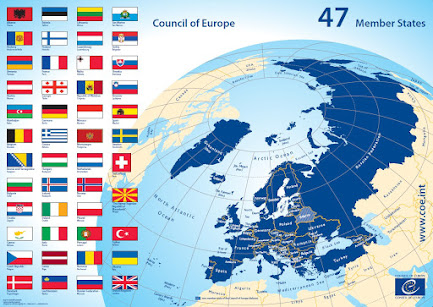Culture shock is a sense of anxiety, depression, or confusion
that results from being cut off from your familiar culture, environment, and
norms when living in a foreign country or society.
Culture Shock in Spain
Greeting - Hola!
People in Spain are used to greeting each other, they are
friendly. Usually when they meet their friends there are hugs, and kisses on
the cheek. they also say "hola!" when meeting people on the streets,
in shops, in restaurants, in supermarkets, on buses, and other public places.
when they leave shops, supermarkets and buses, they say "adios!" and
"adeu!" which means goodbye in English.
Eat 4 times a day
Breakfast from 9am to 11 am, lunch from 2pm to 4 pm,
afternoon meal from 6pm to 8pm, and dinner from 9pm to 12 pm.
Activity time - lunch break or siesta
In Spain, there is a custom of siesta or a lunch break
around 1 pm to 3 pm, usually used for lunch breaks or naps. At that time many
shops and offices were closed, except for special places for tourists. all
shops close around 9pm. there's more, on sundays, lots of shops are closed.
Hangout Place - Bar, Discotheque, Night club
People in Spain like to socialize, usually they will spend
the night with their friends or relatives chatting while drinking alcohol.
nightclubs and discotheques are usually crowded around 1pm or 2pm, and close
around 6am.
Vacation and Relax - Beach
During holidays or weekends, usually people in Spain go to
the beach with their friends to relieve boredom.
Country Full of Love
Spain is one of the most romantic countries, many people
express love, it can be through messages, social media, song lyrics, and in
public places many show love with their partners.
Culture Shock in CANADA
Honest and very respectful of people's privacy.
People in canada have a high level of honesty, they will say
what they feel, they want, or when they refuse a request. people in canada
really respect other people's privacy, don't ask people's privacy carelessly,
don't spread any information without permission from the person directly, or it
can be said that you must have good manners.
Independence and punctuality
Canadians live independently, adults live alone, do their own
work. many of them have pets such as dogs and cats to accompany them.
Punctuality is also very required in canada, must be ready
or be present 5-10 minutes before the meeting time or before the event starts.
Cold weather and very cold
Normal weather in Canada is cold, in winter it will be very
cold. in canada the lowest temperature ever was -63 degrees celsius.
Habit of walking on the right
Canadians have a habit of walking on the right. wherever
they are, on the streets, in other places, also when using vehicles and
walking, so they become very organized
Farting after eating is considered to appreciate food
Farting after eating is considered a sign of gratitude after
eating, appreciating food, and giving praise to someone who has cooked food
The prohibition of using perfume
In Canada, there is a ban on the use of perfume, especially
in hospitals, in places of worship, and in supermarkets. because there are some
people who are allergic to perfume which can cause shortness of breath.
Culture Shock in BRAZIL
Greeting - kiss and hug
In Brazil, people usually greet by kissing or hugging,
because shaking hands is considered rude. In São Paulo, kiss only one cheek. In
Rio de Janeiro, kissing both cheeks.
Hand sign - finger sign “ok”
Don't make an "excellent" sign with your fingers
in a zero, that's saying a very bad thing, the very opposite of an
"ok" sign or thumbs up.
Time - no punctuality
In brazil usually people are not punctual when it comes to
informal events is still considered polite.
Lack of Modesty - little bikini
Everyone wears skimpy clothes on the beach in Brazil, girls
wear little bikinis.
Swim with Crocodiles and Piranhas
In brazil crocodiles are quite relaxed and docile, piranha
fish can be caught and eaten, and do not bite or eat humans.
Sources:
https://www.investopedia.com/terms/c/culture-shock.asp
https://ehef.id/post/eropa-individualis-7-kebiasaan-di-spanyol-ini-pasti-gugurkan-anggapan-tersebut
https://sampahmelulu.wordpress.com/2013/01/20/culture-shock/
http://exoticgringo.com/2013/07/culture-shock-brazil/
https://woltersworld.com/things-that-shock-tourists-when-they-first-visit-brazil/
https://pictureoflife99.blogspot.com/2018/11/culture-shock-di-kanada-yang-perlu-kamu.html
https://travel.tribunnews.com/2018/09/29/5-aturan-makan-paling-unik-di-dunia-wajib-kentut-setelah-makan-di-kanada
https://studierendenwerkfreiburg.wordpress.com/2017/09/20/what-is-culture-shock-how-can-you-deal-with-it/
https://www.studentuniverse.com/blog/travel/travel-tips/top-tips-for-handling-culture-shock
https://www.hipwee.com/feature/siesta-spanyol/
https://www.orami.co.id/magazine/makanan-khas-spanyol/
https://ugc.futurelearn.com/uploads/images/e6/2f/e62f4c6e-0e7f-4c72-8523-d6e11395e246.jpg
https://blogger.googleusercontent.com/img/b/R29vZ2xl/AVvXsEjmt6b3zZws-hlLF4l6DimNeo1hKIOwiUH3YhrzTFDrrgSwpY3GMBVqLbabHu0Qys9wD5PbsqvhG12oT0x4grWovKJqVwMZ7i9UaQHL2jY1aF1-KVe188Nr5pOoxq-qp7lQv13u9cYZxnY/w680/20200614_223011.jpg
https://i.cbc.ca/1.4630101.1524330521!/fileImage/httpImage/image.jpg_gen/derivatives/16x9_780/toronto-weather-5.jpg
http://eurotalk.com/blog/wp-content/uploads/2015/08/kiss.png
https://www.tripsavvy.com/hand-gestures-with-more-than-one-meaning-3149620
https://myrepublica.nagariknetwork.com/uploads/media/2017/September/Punctuality.jpg
https://ghostaroundtheglobe.com/top-7-things-to-do-in-brazil/

















